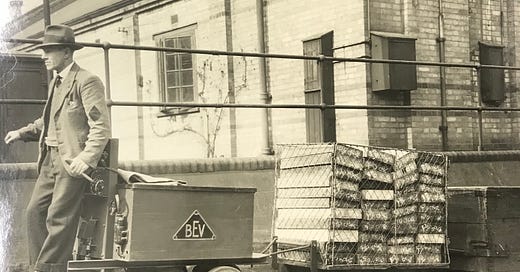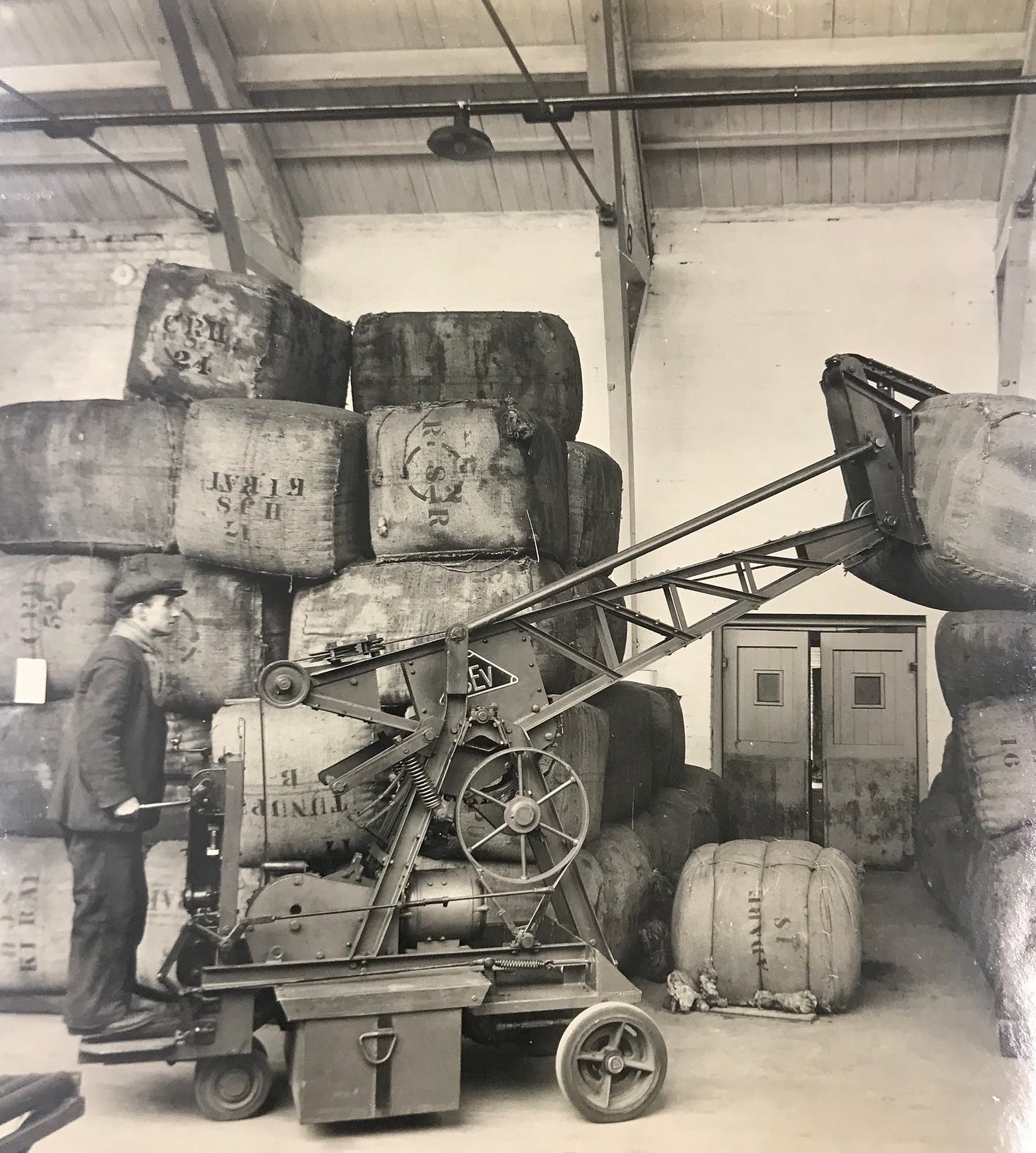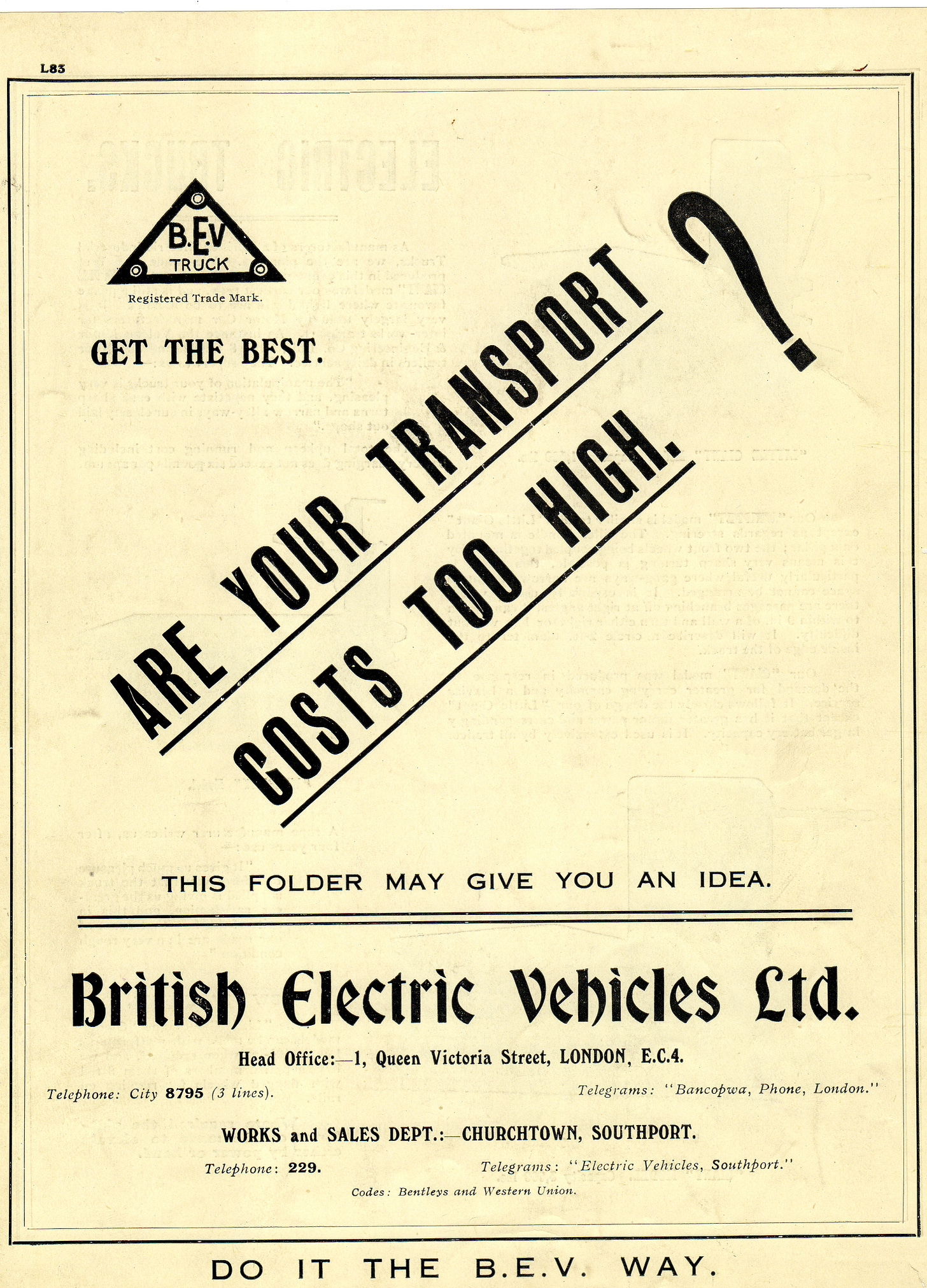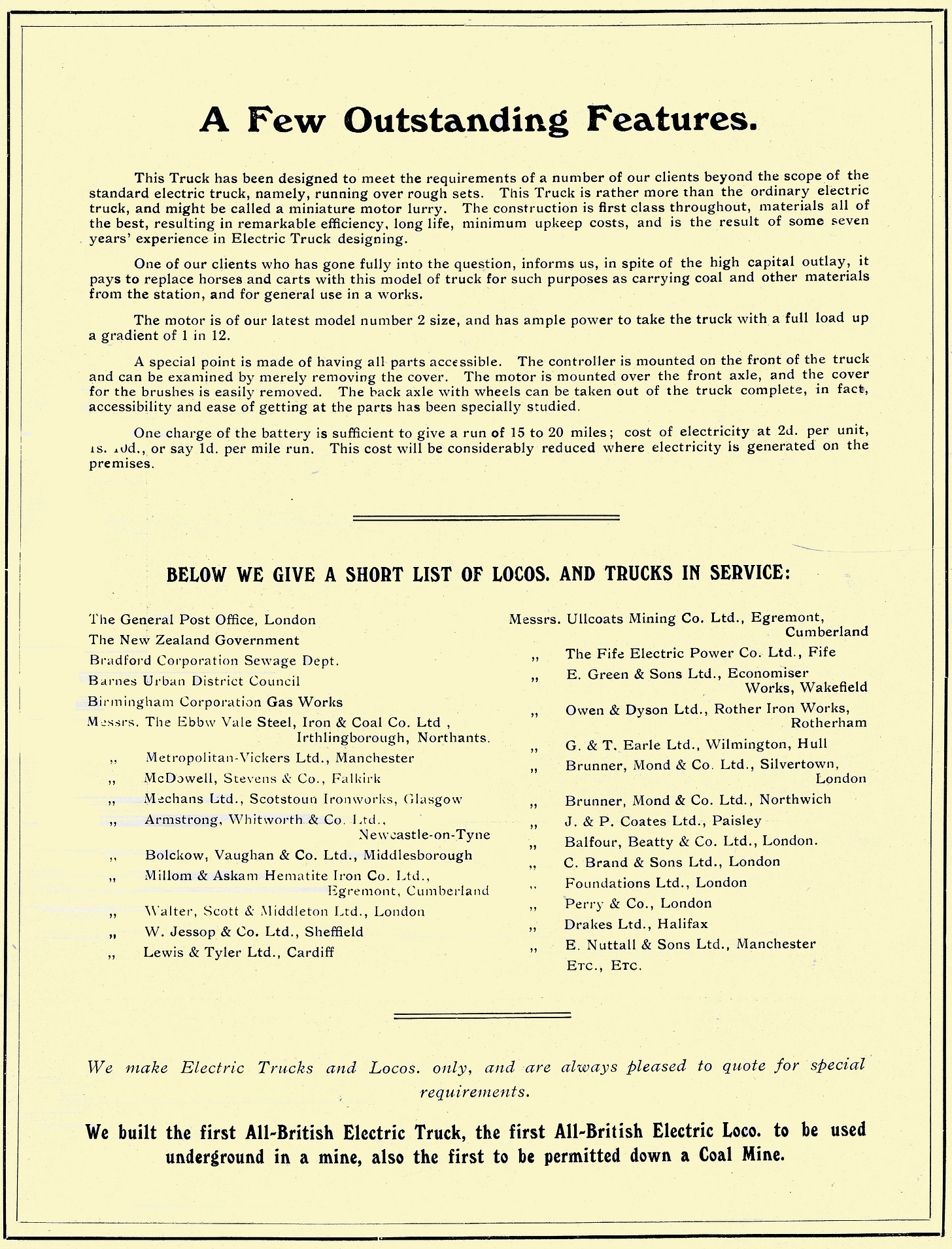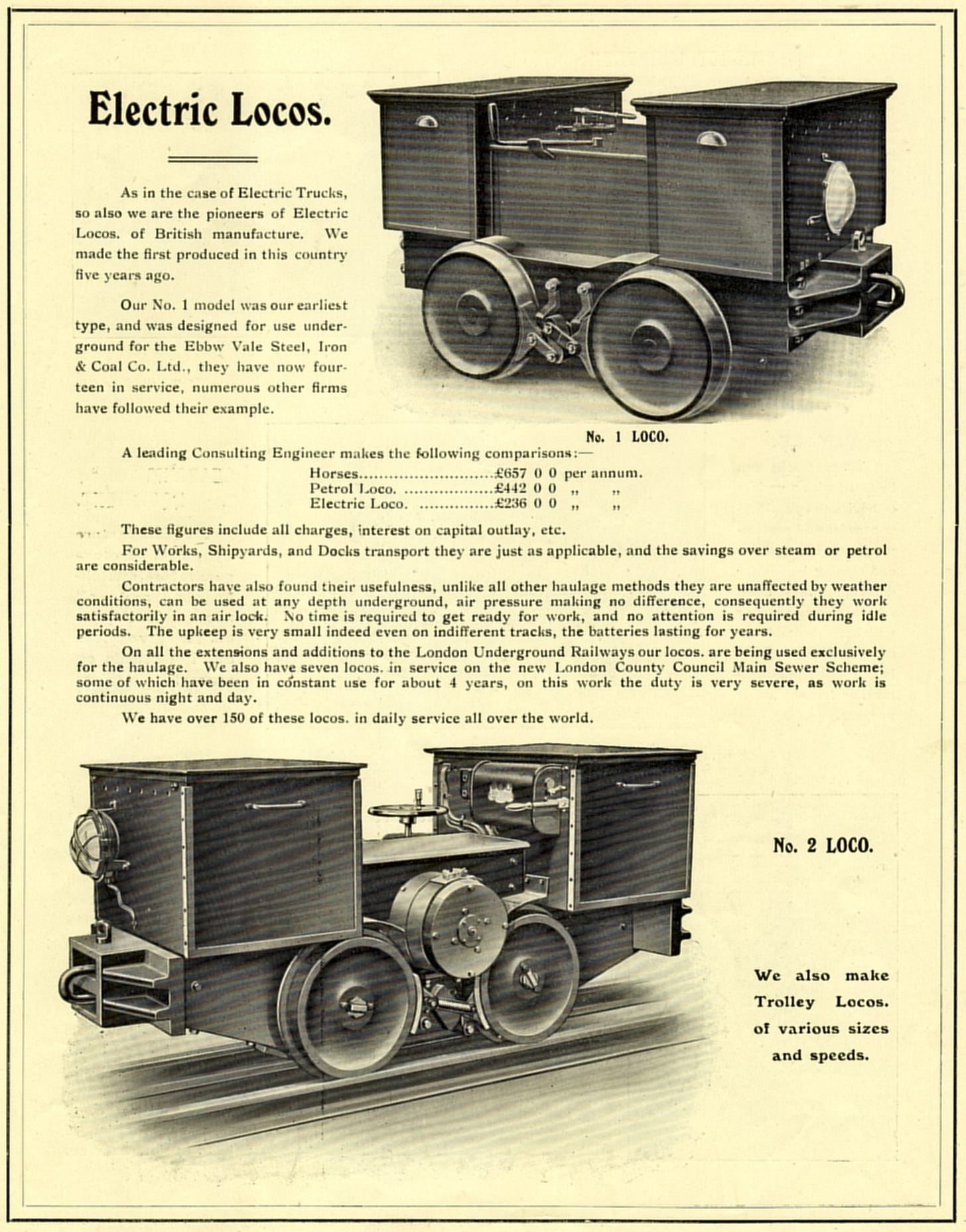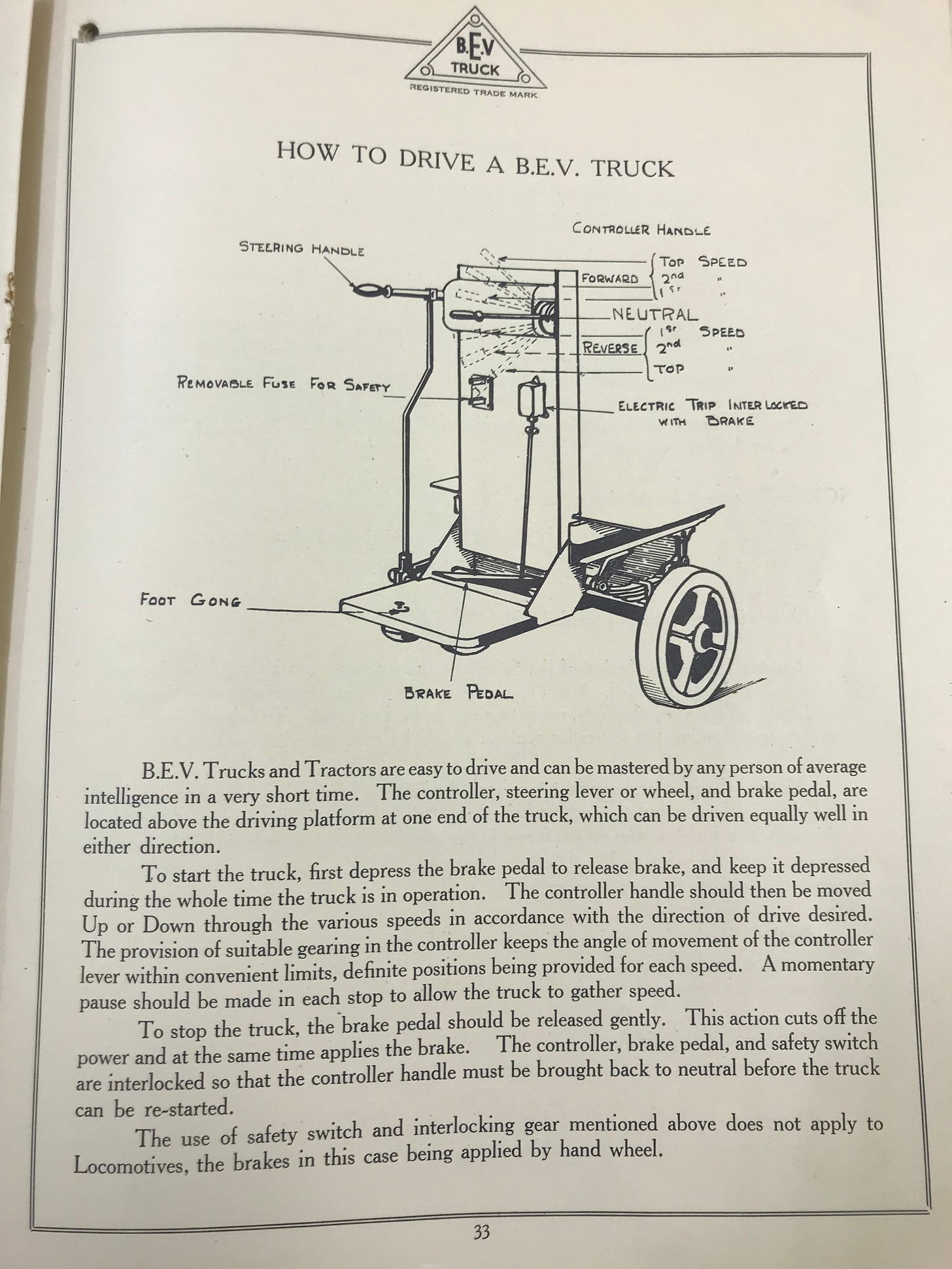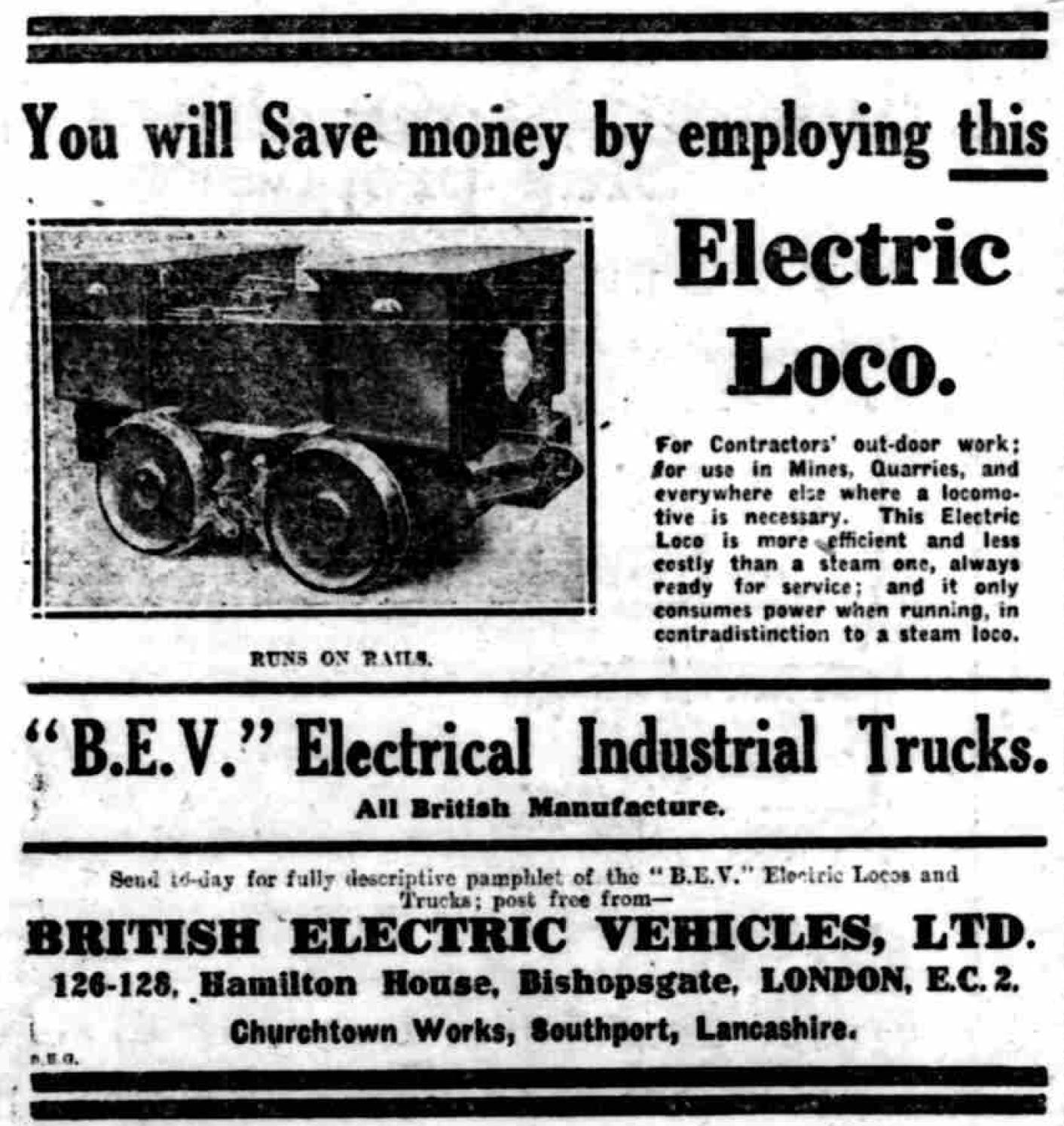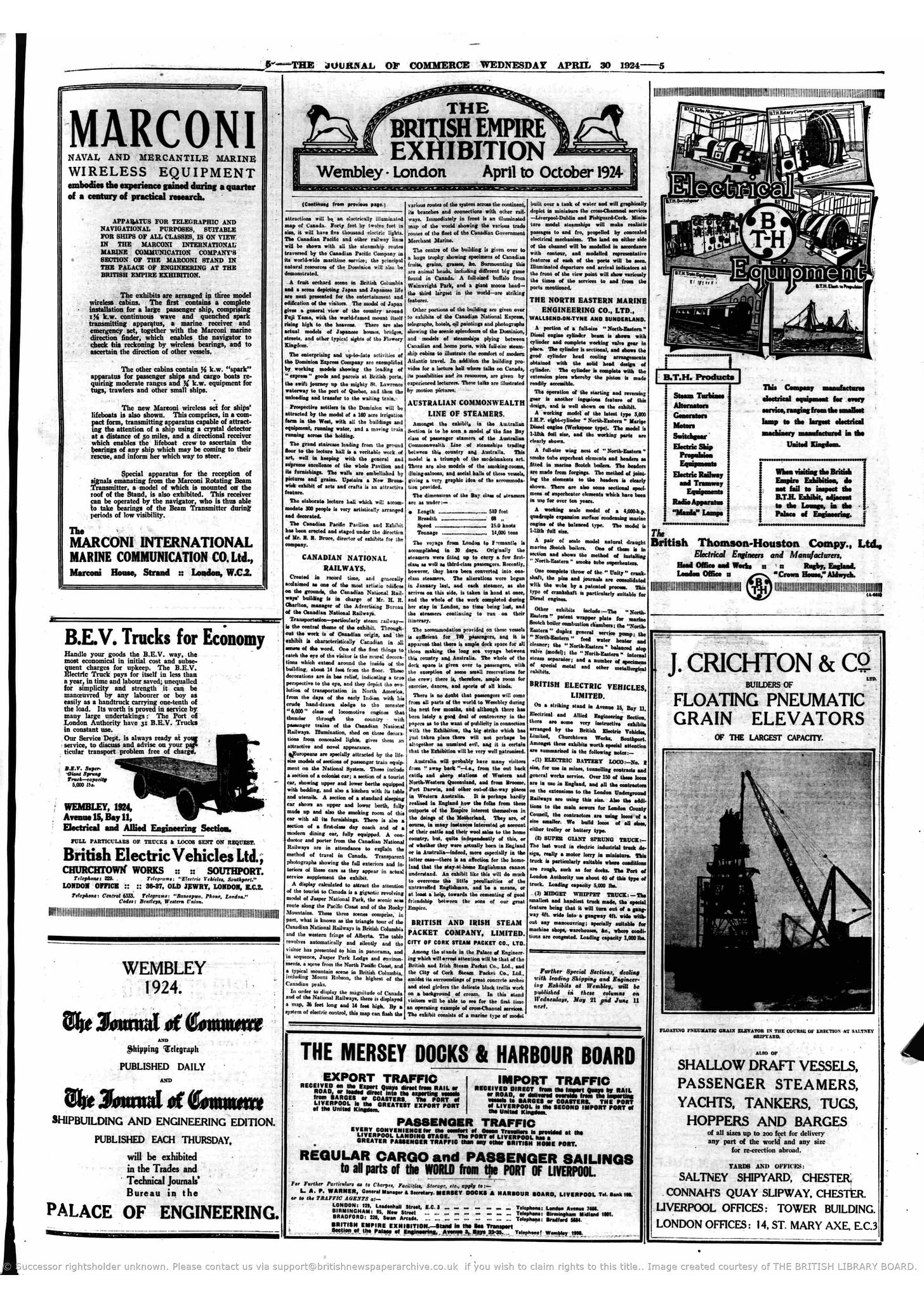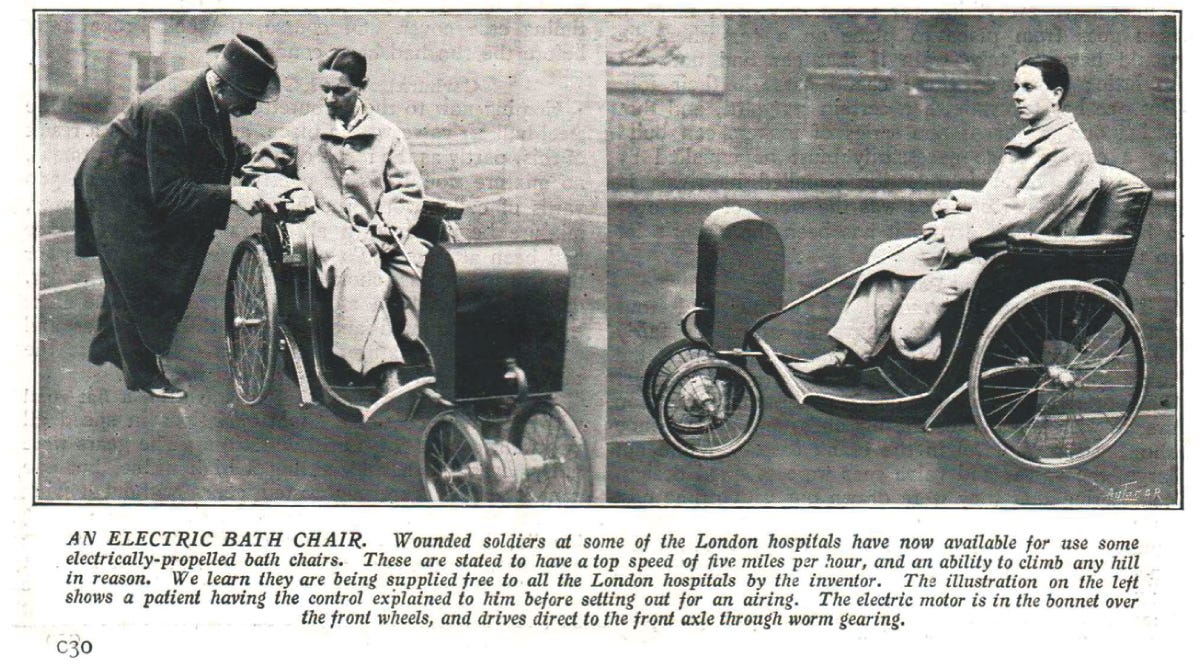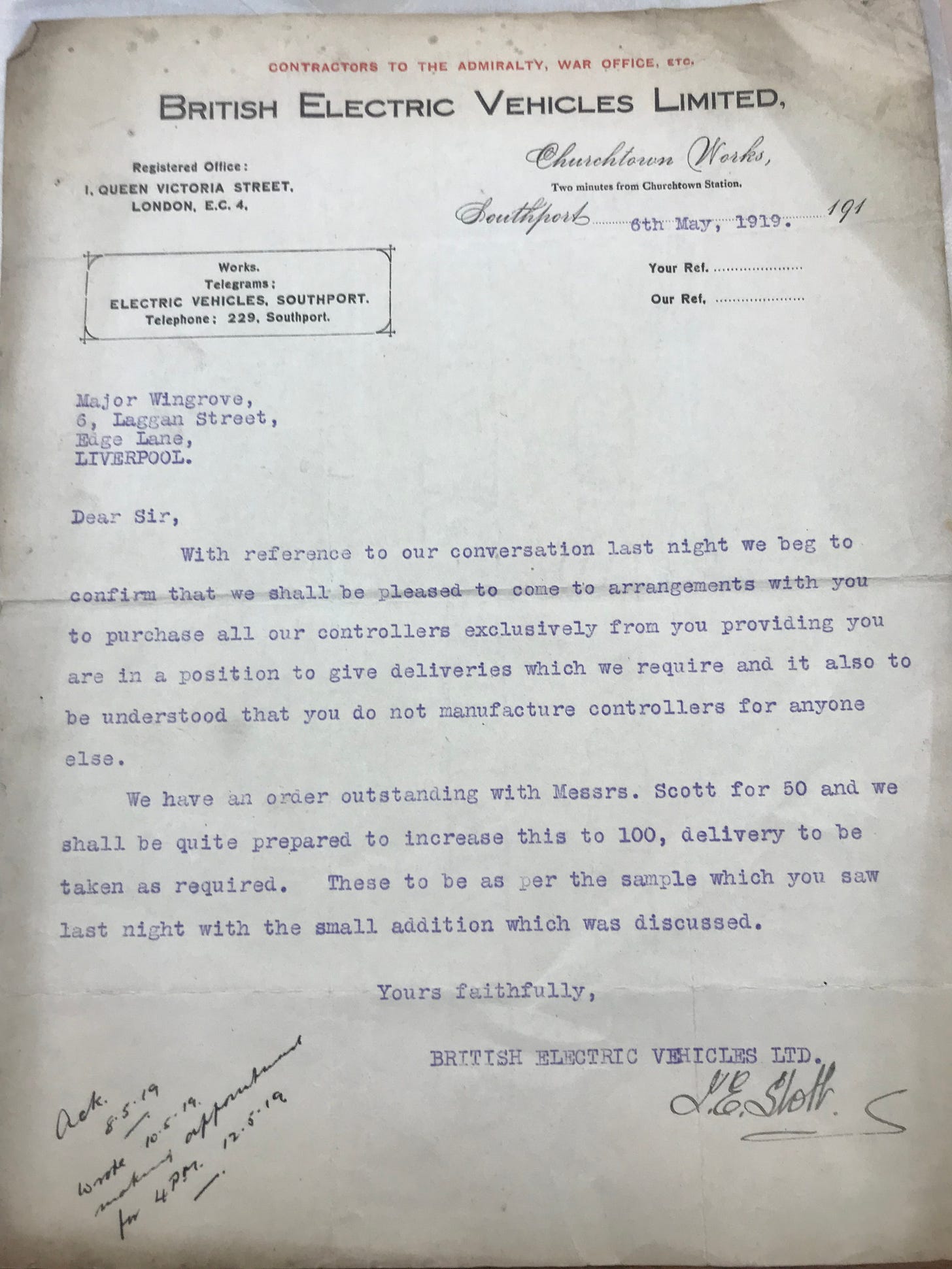How I discovered my great-great-grandfather started one of the first EV companies over 100 years ago
Thanks to two British researchers, my family recently uncovered the incredible history of William Bleakley and how he played a key role in the early development of electric vehicles.
On ANZAC day 2024, my Aunt Deborah messaged to say a UK based researcher had contacted her suggesting that William Bleakley, my great-great-grandfather, was one of three founders of a company called British Electric Vehicles in 1916. That side of our family’s history had been largely lost so I was very curious to learn more. My Aunt connected me to the researcher who sent a treasure trove of documents and photos piecing together the incredible life of William Bleakley Senior.
A tragic war-ravaged family history rediscovered
My grandfather, Harold William Bleakley (Bill) was born in 1923. His father James left the family a few years later when Bill was just a small child so my grandfather grew up not knowing much about his father’s side of the family.
My grandfather fought in WW2 and then raised a family in Perth with my grandmother Beryl. My brothers and I have very fond memories of Bill and Beryl (Nana and Pop) and loved them dearly. Bill passed away in 2008 and Beryl in 2011. The following year in 2012 a writer contacted our family with some surprising news about Bill’s father in WW1.
The Avenue of Honour in Kings Park in Perth is a row of trees which were planted throughout the 1920s in memory of men who’d died during the first world war. Beneath each tree is a plaque with the name of a fallen soldier.
The writer had been walking along the Avenue of Honour when she noticed two trees side-by-side with the same “Bleakley” surname. She decided to research the story behind the two men and discovered that they were two brothers, William and Harold, and were both killed on the same day, at the same place, in the Battle of the Somme in November 1916. Going deep into the archives, the researcher found a third brother, James, had also fought in the war and had landed at Gallipoli on the afternoon of ANZAC Day, April 25th the previous year. After surviving the landing, James was wounded a few weeks later and was transferred to Egypt and then England to recover. James then joined another unit in France in August 1916. Less than 12 months after James’ brothers were killed, his father, William Senior also died. Now the sole means of support for his mother and younger siblings, James was granted special discharge and returned to Perth where he later fathered my grandfather Bill in 1923.
Our family was obviously very surprised to learn this history after the writer published the story in a beautifully written blog post in 2012. Adding to the tragedy was the fact that Bill was completely unaware of the turmoil his father had been through or even the existence of his fallen uncles, after who he’d been named.
Reflecting on this on ANZAC day 2024, I resent the blog post around to family members. My Aunt Deborah responded saying that she’d recently been contacted on ancestory.com by Alan Bolton, a UK based amateur genealogist, suggesting that William Bleakley Senior, James’ father, was one of three founders of a company called British Electric Vehicles (B.E.V.).
Alan was doing some digging for his friend and fellow civil engineer Graham Fairhurst who is a self-described narrow-guage railway enthusiast and the proud owner of one of B.E.V.’s original models. Over the past year, the pair have amassed a treasure trove of documents, brochures and photographs chronicling the history of B.E.V.
The following is a summary of their research to date. The Bleakley family is incredibly grateful to Alan and Graham for their work in uncovering this history, which otherwise would have been completely lost to the family.
William Bleakley Senior, founder of British Electric Vehicles.
Founded in Southport England in 1916, British Electric Vehicles Ltd manufactured a range of small battery electric trucks that were used in factories, quarries and tunnelling projects including expansion works on the London Metro.
The circumstances of B.E.V. ’s origins are unclear but Bolton and Fairhurst believe that Bleakley and Stott met in Western Australia before returning to the UK to start or re-establish a company selling electric bath chairs (wheelchairs). William had already spent many years commercialising early electric vehicles and had been the sole agent in the UK for an American company that made electric bath chairs and had himself made design improvements to electrically propelled vehicles.
In order to finance the expansion of the business it appears Copely, WA’s first millionaire and the uncle of Stott’s wife, provided funding for the venture and B.E.V. was formed. Tragically, William Bleakley Senior died in 1917 (aged 53) not long after B.E.V. was founded.
Although the range of vehicles was initially expanded the post war depression and strikes in the 1920’s took their tole and BEV was wound up and acquired by another company, Wingrove and Rogers in 1926. The winding up document recorded that at the time B.E.V. was formed Bleakley was the sales manager, Stott, an electrical engineer, was the works manager and Copely was the general manager for the company.
B.E.V. pioneered commercial electric vehicles in the UK
B.E.V. made both rail and tire-wheeled models of their battery electric trucks which were used in a variety of industrial applications both in the UK and around the world.
Fairhurst says that B.E.V. locomotives were used on quite a lot of construction works, in particular tunnelling projects such as building the Mersey tunnel and extensions to the London Metro.
The trove of documents uncovered by Bolton and Fairhurst includes a product brochure which outlines specifications, operating costs and operation manuals for B.E.V.’s various models.
“The construction is first class throughout, materials all of the best, resulting in remarkable efficiency, long life, minimum upkeep costs and is the result of some seven years’ experience in Electric Truck designing.” reads the brochure.
“One of our clients who has gone fully into the question, informs us, in spite of the high capital outlay, it pays to replace horses and carts with this model of truck for such purposes as carrying coal and other materials from the station, and for general use in works.”
“One charge of the battery is sufficient to give a run of 15 to 20 miles; cost of electricity at 2d. per unit, 1s. 10d., or say 1d. per mile run.”
With “s” referring to shillings and “d’ referring to pence, the brochure states a full charge would cost about 1 shilling and 10 pence (22 pence), or about 1 pence per mile. In today’s money this equates to around A$0.25 per km.
Opportunities for further cost reductions via onsite power generation are also mentioned.
“This cost will be considerably reduced where electricity is generated on the premises.” reads the brochure.
“As in the case of Electric Trucks, so also we are the pioneers of Electric Locos of British manufacture. We made the first produced in this country five years ago.” states a B.E.V. brochure.
The marketing materials compare the lower operating costs of B.E.V.’s trucks and locos against other forms of transport. According the the brochure horses cost £657 per annum, petrol locos £442 and the B.E.V. loco £236.
“These figures include all charges, interest on capital outlay, etc. For Works, Shipyards, and Docks transport they are just as applicable, and the savings over steam or petrol are considerable.”
Tire-wheeled models included the delightfully named “Midget Whippet” which could handle loads of up to 1,000 lbs (~450kg) and could manoeuvre along narrow corridors and around tight corners and the “Super Giant” which could carry up to 6 tons (5.4 tonnes).
“Just the truck that has been wanting for a long time, useful in warehouses, between rows of machines, etc., in fact everywhere that a standard Electric Truck cannot get. The price is right, quality is our standard, running cost about Three-pence per day, upkeep cost very small.” says the brochure.
“We manufacture the most efficient Electric Trucks and Locos in the world, and shall be pleased to give details of tests on request.”
Another page provides instructions for how to operate the truck.
An advertisement in the Liverpool Journal of Commerce in 1919 also promotes the cost saving features of B.E.V.’s battery electric loco.
“For Contractors’ out-door work; for use in Mines, Quarries, and everywhere else where a locomotive is necessary. This Electric Loco is more efficient and less costly than a steam one, always ready for service; and it only consumes power when running, in contradistinction to a steam loco.” reads the advertisement.
Another advertisement in in 1924 sells a speedy return on investment.
“The B.E.V. Electric Truck pays for itself in less than a year, in time and labour saved; unequalled for simplicity and strength it can be manoeuvred by any labourer or boy as easily as a handtruck carrying one-tenth of the load. It’s worth is proved in service by many large undertakings: The Port of London Authority have 31 B.E.V Truck in constant use.”
In 1924 the company exhibited its models at the British Empire Exhibition.
“On a striking stand on Avenue 15, Bay 11 Electrical and Allied Engineering Section there are some very instructive exhibits arranged by British Electric Vehicles, Limited, Churchtown Works, Southport.” The column then provides details of three B.E.V. models.
Early optimism about the future of electric vehicles
Bolton believe’s William Bleakley was importing American made bathchairs (wheelchairs) into the UK in the early 1900s and that this provided the business connections, technical knowhow and the impetus to develop his own small electric trucks and establish B.E.V. with Stott.
The original bathchairs were developed for injured soldiers after the American civil war. Ship passenger lists show William travelling from London to New York in 1908, possibly to meet with the American bathchair company.
An article about electric bath chairs in the Eastbourne Gazette on Wednesday 25 July 1917 records the excitement surrounding the smooth, silent vehicles gliding around London neighbourhoods.
On Friday morning last, a pleasant wave of excitement passed over this neighbourhood of Grove-road, caused by the appearance of a bathchair, occupied by a lady, travelling about five miles hour. The method of propulsion was not apparent, and the entire absence of noise and vibration, added to its silky progression, at first sight made it seem somewhat uncanny. The driver indicated that she was perfectly happy and quite at home in the management of it. Later that day, the writer had the pleasure of an interview and inspection, and found it to driven by small electric motor of 1/4 horse power, operated by battery of 24cells, tucked away under the seat. The control is very simple, and is mastered in about five minutes, as there no clutch or changespeed mechanism of any kind.
Re-charging the cells requires minimum of attention and cost, and carried out in the garage at home. Electric bath-chairs, though common in America, are at present a novelty in England and it is needless to say they have long passed experimental stage and are quite a success and has come to stay. It has the recommendation every part was of English manufacture. There is no doubt whatever that this electric vehicle who desires companion with her when taking the air, a design to accommodate two persons will shortly be available.
The final paragraph illustrates the sense of optimism around the new technology and its prospects of replacing internal combustion engined vehicles.
Here we see in miniature the future method of propulsion for all vehicles, and when we remember the rapidity of modern engineering progress in development of the aeroplane and the submarine, we should realize, as a business people, that the days of the noise and smell of petrol-cars are already numbered.
As we’re all too aware, the rise of Henry Ford’s assembly line flooded the world with mass produced internal combustion vehicles and it would be another 100 years before electric vehicles poised any real challenge to fossil fuel powered vehicles.
Exporting electric trucks to the world
Winding up documents from 1926 show that the company shifted its focus from bathchairs to models for industrial applications and the war effort during WW1.
Shortly after its formation, and in view of the war, the manufacture of motor bath chairs was abandoned by the Company, and steps were taken to introduce small electric motor vehicles such as trollies and trucks. Subsequently much larger vehicles, including electric locomotives, were manufactured by the Company.
In addition to the British Admiralty and English Steel Corp. Ordnance Dept, other noteworthy customers include Dunlop Rubber Co., Metropolitan Tunnel and Public Works Co (London Tube), Port of London Authority and Siemens Bros. Ltd. (a UK branch of Siemens Germany).
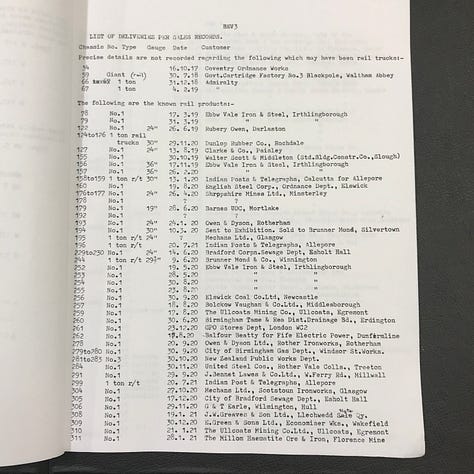
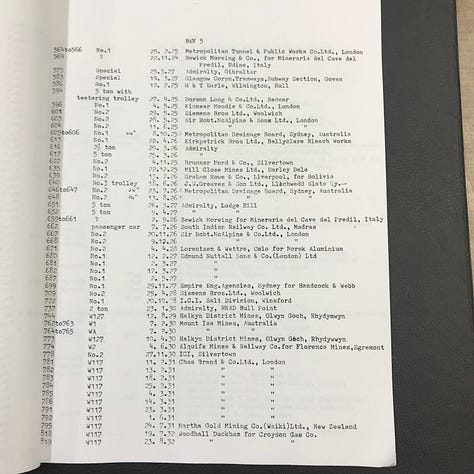
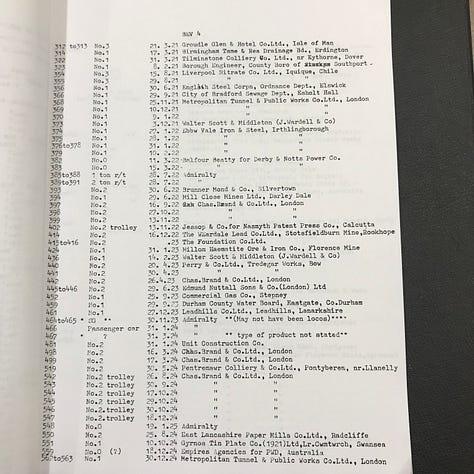
By the 1920s B.E.V. was supplying electric trucks and locos to customers around the world. Documents from Windgrove and Rogers, who acquired the company in 1926, show that B.E.V. sold electric trucks to the Buenos Aires Great Southern Railway in 1920 and the Chinese Eastern Railway in 1928. New Zealand Public Works Co. and Indian Posts and Telegraphs.
A B.E.V. truck even made its way all the way to Australia when Mount Isa Mines Limited purchased one in 1930.
A document from Windgrove and Rogers recording the history of B.E.V. reads:
B.E.V. Locomotives were used extensively on all the London Tube extensions since 1922 when Charles Brand & Son limited took delivery of their first B.E.V. locomotive. They were also used on the Mersey Tunnel, North of Scotland Hydro Electric Board's various contracts, the Toronto and Hamburg Underground Railway Schemes.
B.E.V. trucks and locomotives are also supplied to the Services and various Government Departments. These are generally of a special nature to meet their particular conditions of service. Both trucks and locomotives have been exported to most overseas countries for more than 50 years and exports represents about a third of the Company’s sales.
A Windgrove and Rogers company report from 1920 suggests that B.E.V. had also begun manufacturing electric cars and vans.
Messrs British Electric Vehicles Ltd. are extending their business and in addition to trucks, are now building Locos, and Electric Motor Cars and Delivery Vans, so that a steady increase in our business in this direction my be anticipated.
What happened to B.E.V.?
Windgrove and Rogers became the main supplier of B.E.V.’s electric controllers. A purchase order in 1919 documents an exclusivity deal between the two companies.
Winding up documents show that despite promising sales growth, B.E.V. was struggling to stay profitable. In 1922 B.E.V. went into receivership and was acquired by Windgrove and Rogers in 1926.
Being its largest customer, Windgrove and Rogers had an interest in keeping B.E.V. afloat and they continued to produce electric trucks under the B.E.V. brand for many years.
According to the company’s Wikipedia page, Windgrove and Rogers sold their electric vehicle and locomotive business to Pikrose & Co Ltd in 1989. Pikrose & Co’s mining electric vehicles business was then sold with the B.E.V. brand to a Peruvian company called Serminsa Group in 2005. Serminsa supplies electrical locomotives and wagons for the underground transport for mining, construction and railways in countries across South America. A quick glance at Serminsa’s website suggests that elements of the original B.E.V. models survive to this day.
A second bite at the cherry
Discovering the history of B.E.V. and my great-great-grandfather’s involvement has been truely fascinating and I’m extremely grateful to Alan and Graham for bringing it to light. EVs have long been a passion of mine, and promoting their adoption is something I deeply believe in. The prospect of cities with clean air and tranquil streets is a precious prize worth striving for. It’s why thousands of people around the world work tirelessly to accelerate the transition and it’s why I’ve also recently cofounded an electric trucking company (albeit before I knew of my family’s history!).
The stories of B.E.V. and other early EV manufacturers remind us that the best solutions aren’t always the ones that end up being taken up by the masses. We’re often led to believe that technology is constantly improving and that anything new is by default “better”. History has proven otherwise. In 2025 there are around 1.5 billion internal combustion engine vehicles belching out emissions into our precious thin atmosphere and causing millions of unnecessary deaths. Another 70 million more of these noisy pollution machines are birthed onto planet earth every year.
While the optimistic predictions in the early 1900s of an all-electric future weren’t entirely accurate, the resurgence of electric vehicles in our own time presents us with another opportunity to reimagine our cities.
The remarkable developments in battery technology of the past decade coupled with low-cost renewable energy and the growing realisation of the urgency climate crisis has resulted in an exponential growth of EVs in recent years. Heavy battery electric trucks and megawatt charging is clearly the next frontier of the clean tech industrial revolution and will transform our cities and supply chains for the better.
Perhaps those hopeful early predictions weren’t wrong after all, they just took a little longer than expected.
Alan Bolton and Graham Fairhurst plan on continuing to research the history of B.E.V. Graham owns an original B.E.V. battery electric Loco from 1926 and hopes to publish a booklet documenting the history of the company in time for its 100 year anniversary.

